Key takeaways:
- Workplace culture significantly influences employee satisfaction, with inclusivity and open dialogue promoting collaboration and innovation.
- Respect in the workplace is crucial for fostering effective teamwork, boosting morale, and reducing conflicts, ultimately leading to higher productivity.
- Legal implications of workplace respect include prevention of discrimination and harassment claims, making a respectful culture a proactive legal strategy.
- Regular feedback loops and recognition programs can enhance respect and collaboration, driving ongoing cultural improvement and employee engagement.
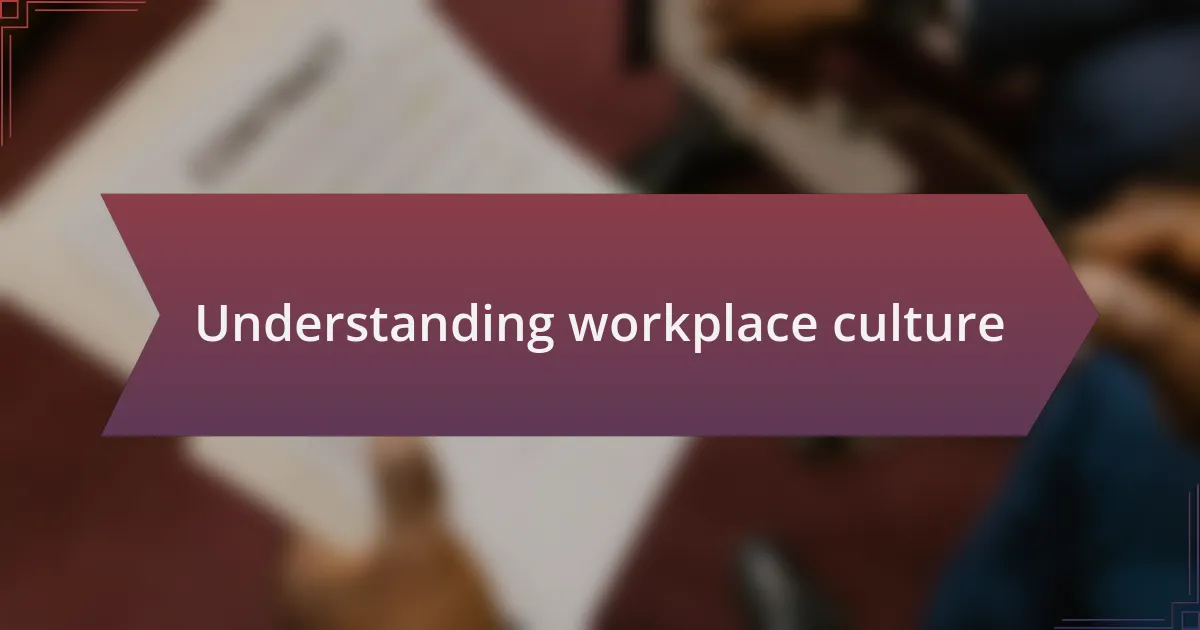
Understanding workplace culture
Workplace culture encompasses the beliefs, values, and behaviors that shape how employees interact and work together. In my own experience, when I first joined a company with a strong emphasis on collaboration, the atmosphere felt electric. It made me wonder: how can an environment that prioritizes respect and teamwork lead to greater employee satisfaction?
I remember a pivotal moment during a team meeting when open dialogue transformed our project outcomes. Everyone’s opinions were not just welcomed but actively sought out, leading to innovative solutions. This kind of culture fosters a sense of belonging and inspires individuals to contribute their best, which often left me reflecting on the idea that inclusivity is not just a nice-to-have; it’s essential for success.
Additionally, I’ve seen the impact of negative workplace cultures firsthand. In a previous job, I witnessed how favoritism and poor communication eroded trust among team members. This experience reinforced my belief that understanding and shaping workplace culture is crucial—after all, how can we expect high performance if our teams feel undervalued or disconnected?
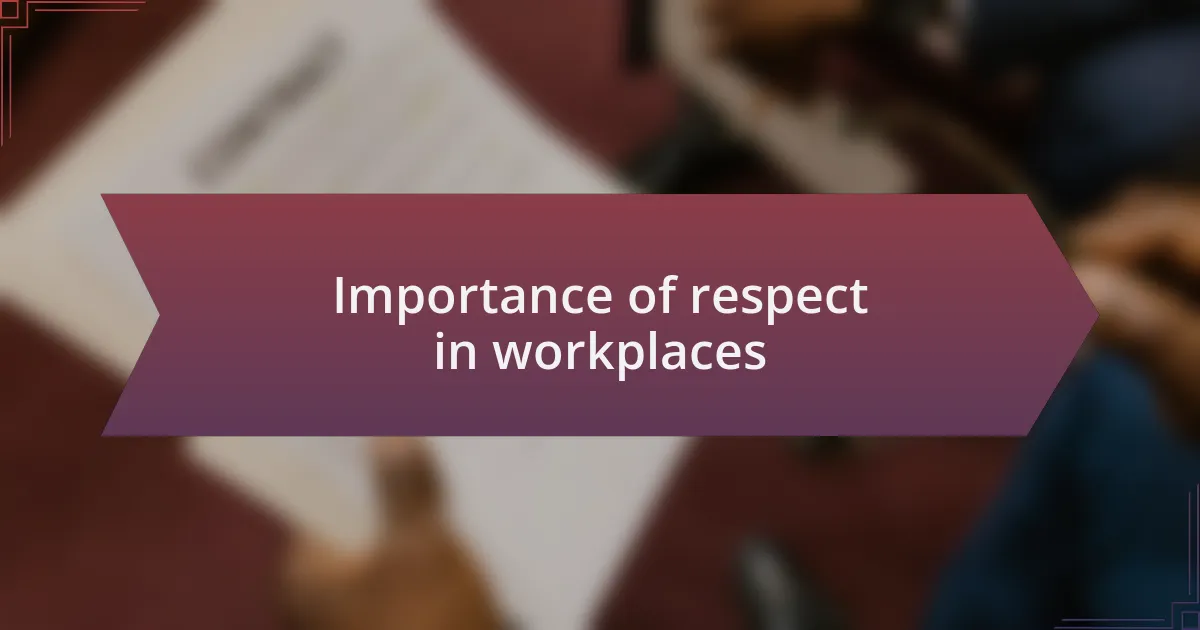
Importance of respect in workplaces
Respect in workplaces is foundational to fostering effective collaboration. I recall a situation where one team member felt dismissed during brainstorming sessions, leading to a palpable tension that stifled creativity. This experience highlighted for me that when respect is absent, it doesn’t just affect one person; it ripples through the entire team, ultimately hindering productivity.
When respect is prioritized, employees feel valued, which boosts morale and enhances engagement. In my journey, I’ve witnessed team members who felt appreciated contribute far more passionately to projects. Isn’t it fascinating how a simple acknowledgment of someone’s efforts can transform their motivation?
Moreover, a respectful workplace significantly reduces conflicts and misunderstandings. I remember a period when our team faced a challenging deadline. Instead of blaming each other, we leaned on mutual respect to navigate the pressure, fostering a supportive environment. This taught me that when respect is woven into the fabric of our interactions, challenges become opportunities for growth rather than sources of contention.
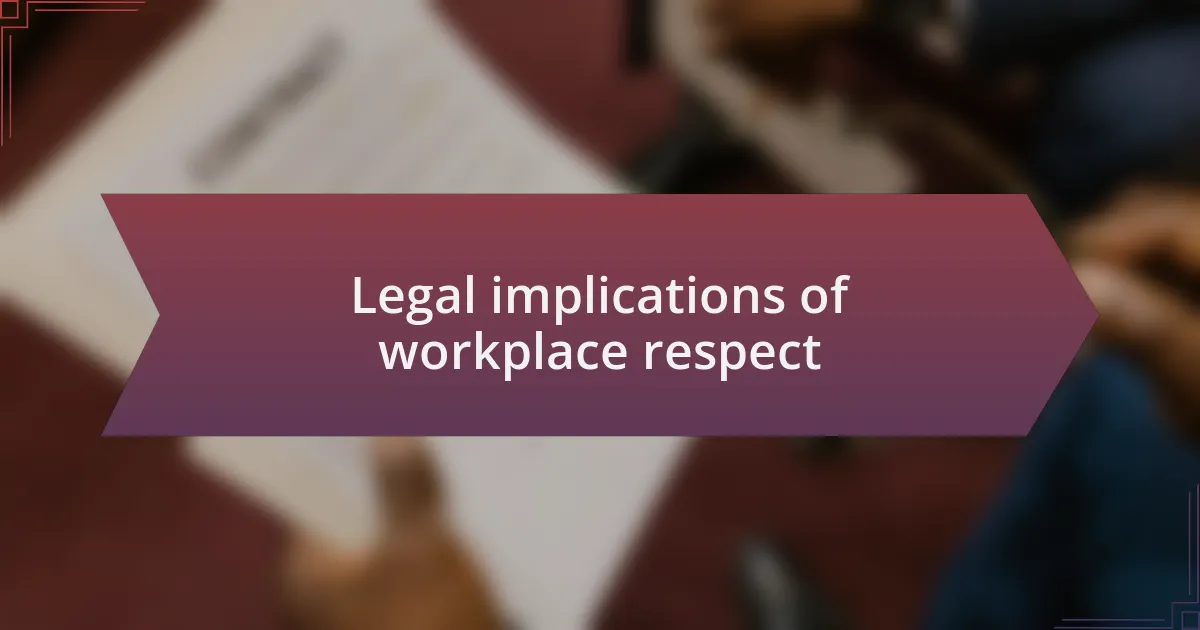
Legal implications of workplace respect
Respect in the workplace also has significant legal implications. For instance, when I first delved into the realm of employment law, I was struck by how many cases stemmed from a lack of respect—specifically, discrimination and harassment claims. You see, when employees feel disrespected or marginalized, it can lead them to seek legal recourse, resulting in costly litigation for employers. Isn’t it sobering to think that fostering a respectful culture can be a proactive measure against legal battles?
Moreover, maintaining a respectful environment can prevent workplace bullying, which is increasingly being recognized under various anti-bullying laws. I recall a meeting with an HR consultant who emphasized that proactive training on respect could defuse potential issues before they escalate. This resonates personally because I’ve witnessed how early intervention—prioritizing respect—can protect both employees and organizations from unnecessary legal entanglements.
Finally, beyond individual rights, the legal framework encourages organizations to establish policies that promote respect. From my experience reviewing company handbooks, I have seen that clear guidelines not only set the tone for behavior but also serve as a protective shield during disputes. Isn’t it empowering to know that laying down a foundation of respect not only nurtures a positive work culture but also safeguards the company legally?
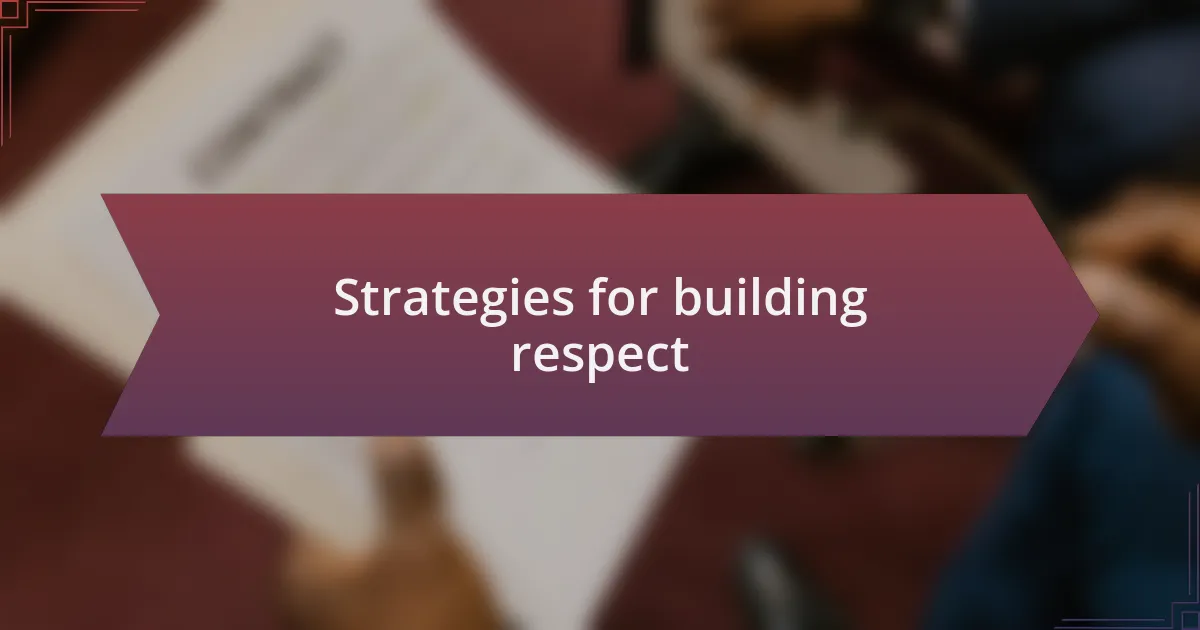
Strategies for building respect
Creating a culture of respect starts with open communication. From my experience, encouraging employees to express their thoughts freely can significantly reduce misunderstandings. I’ve even arranged regular feedback sessions in my workplace, and witnessing employees engage positively with each other was eye-opening. Isn’t it rewarding to see everyone feel valued and heard?
Another effective strategy is modeling respectful behavior at all levels of the organization. I’ve noticed how leadership actions—like addressing conflicts constructively—can inspire the same from employees. It reminds me of a time when a manager took the time to acknowledge everyone’s contributions in a team meeting; the ripple effect of respect that followed was remarkable. When leaders embody the values they preach, it creates a powerful example.
Incorporating recognition programs can also foster respect. When I’ve seen peers celebrated for their hard work, it not only uplifted those individuals but also cultivated an atmosphere of mutual appreciation. Isn’t it fascinating how simple acts of recognition can reinforce respect among team members? Ultimately, these strategies can transform a workplace, turning it into a vibrant culture where everyone thrives together.
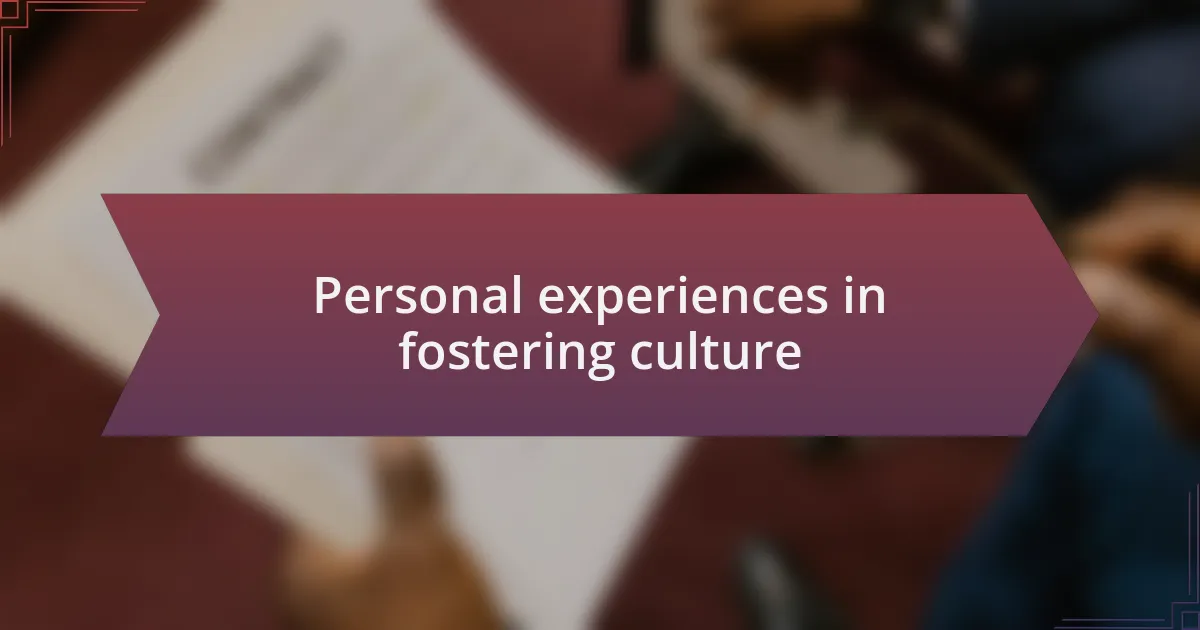
Personal experiences in fostering culture
Fostering a positive workplace culture is not just about policies; it’s deeply personal. I recall a time when I organized an informal coffee chat where team members shared personal stories and interests. The laughter and connections formed during that hour reshaped our dynamics—what started as colleagues became friends. How often do we overlook the importance of personal connections in the workplace?
Another experience that stands out was during a challenging project where tensions were high. Instead of pushing through in silence, I encouraged an open forum for discussion. The moment we shared our frustrations and brainstormed together, it lifted the weight from everyone’s shoulders. Isn’t it amazing how vulnerability can lead to strength and unity?
I’ve also seen the magic that can happen through informal mentorship pairings. When I matched experienced employees with newcomers over casual lunches, I watched knowledge transfer happen effortlessly. It felt like creating a bridge where wisdom met fresh perspectives. Isn’t that what a thriving workplace should be about—everyone learning from each other?
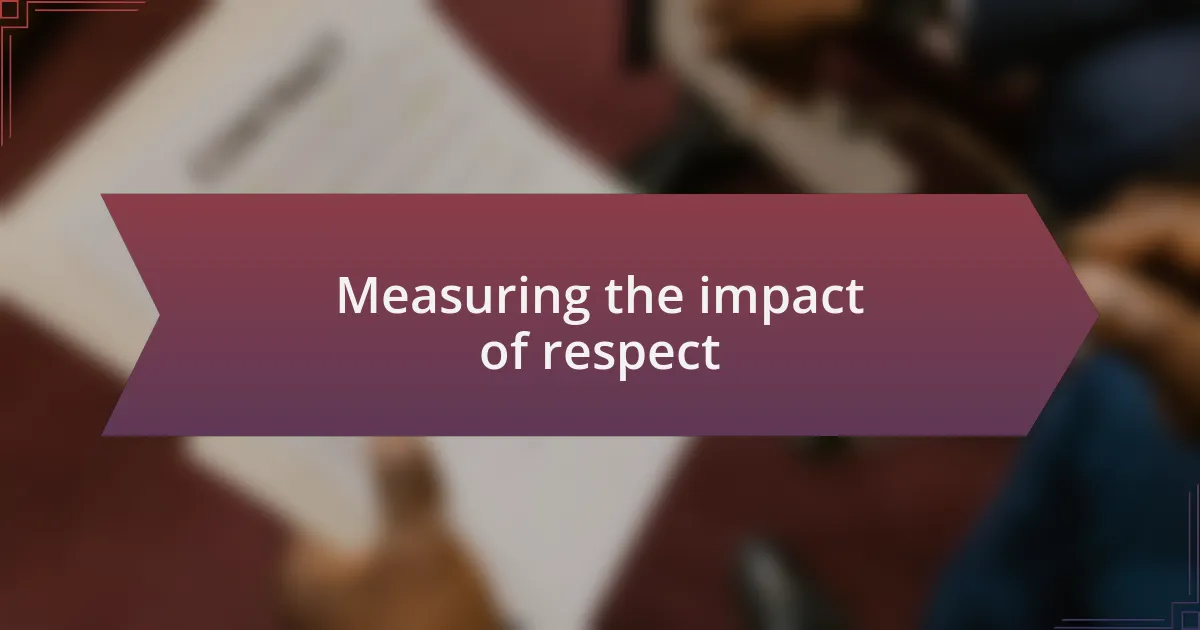
Measuring the impact of respect
When considering how to measure the impact of respect in the workplace, I find that surveying employees provides invaluable insights. Recently, I implemented a simple anonymous survey that asked team members to rate the level of respect they felt in daily interactions. The results were eye-opening; a majority felt appreciated but a notable percentage highlighted areas needing improvement. Isn’t it revealing how a few focused questions can uncover underlying sentiments?
Another method I’ve found effective is observing team dynamics during meetings. I recall a session where I noticed one employee continually interrupted. Addressing this immediately not only restored the conversation flow but also demonstrated our commitment to respect. It made me realize that sometimes, respect is as much about the unspoken cues as it is about the words we choose.
Lastly, I began tracking team performance metrics alongside engagement scores. In a previous role, I noticed that teams with higher respect ratings consistently exceeded their performance targets. Sometimes, it feels like a direct correlation exists between how valued individuals feel and their output. How often do we correlate emotional well-being with tangible results?
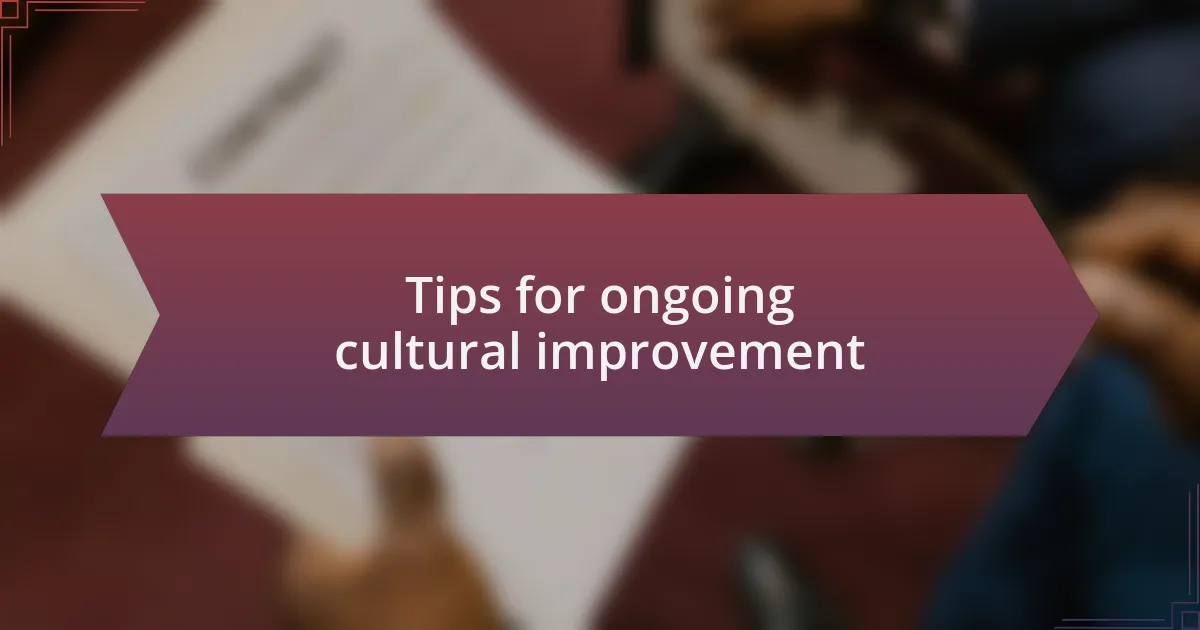
Tips for ongoing cultural improvement
When it comes to ongoing cultural improvement, I’ve found that regular feedback loops are crucial. In my experience, scheduling quarterly check-in meetings allows team members to voice their concerns or suggestions in a safe space. I remember one instance where a simple adjustment to our communication style helped resolve misunderstandings that had lingered for months. It’s amazing how just a few dedicated minutes can bolster trust and transparency.
Another effective strategy involves recognizing and celebrating small wins. I once organized a monthly “Kudos” moment in our staff meeting, where we highlighted individual contributions that demonstrated respect and collaboration. This practice not only boosts morale but also reinforces the behaviors that support a respectful culture. Have you noticed how a little acknowledgment can ignite a team’s motivation?
Moreover, offering targeted training sessions can be transformative. I led a workshop focusing on active listening skills, which, surprisingly, not only reduced conflicts but also fostered deeper connections among colleagues. The emotional shift in the room was palpable; people began to engage more authentically. Isn’t it fascinating how investing in personal development can lead to a more cohesive workplace?